

Temples and other major historical sites are fun to see and all, but look beyond the guidebooks and there are many more hidden gems to discover in vibrant Bangkok. Let’s veer off the beaten path and check out our top picks of what to see near ASAI Bangkok Chinatown.
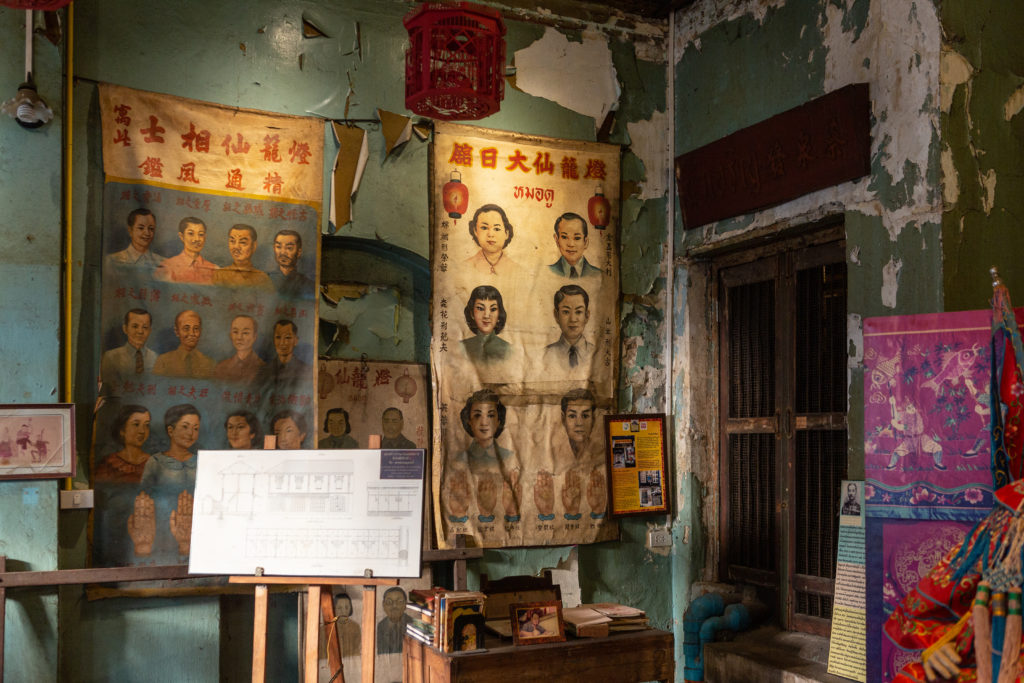
Hidden amongst the streets of Charoen Chai is Historic Hut, a museum that tells the story of the Thai-Chinese community that has lived here for more than 100 years. Walking along the street lined with Chinese-offering paper shops, you will feel as if you have stepped back in time. This traditional shophouse is home to everything Thai-Chinese, whether it is Chinese Opera garments or old photographs that tell stories of the local way of life. One of the highlights of this museum is the historical corner dedicated to fortune-telling, as the renowned Thai-Chinese fortune-teller named Hier Hok Saepueng was a well-known figure in this community. When he passed away 80 years ago, his wife donated everything from their fortune-telling shop to the museum. Besides all the relics and precious pieces from the past that fill the museum, the shophouse has a unique story of its own. Before it became a museum, the owners of the land were Chumbhotbongs Paribatra (Prince of Nakhon Sawan II) and M.R.Pantip Paribatra, both members of the Thai royal family. The shophouse also served as a rehearsal space for the Chinese Opera Theatre Company before it was abandoned. Eventually, the Charoen Chai Conservation Project formed and turned this space into the charming, community-led museum it is today. If you’re interested in history and culture, this museum is not to be missed while you’re exploring Bangkok’s Chinatown.
Daily 7 am - 6:30 pm 32 Soi Charoen Krung 23 (Chareon Chai Alley) Phlap Phla Chai Rd, Pom Prap, Pom Prap Sattru Phai, Bangkok Tel. +662-226-4606
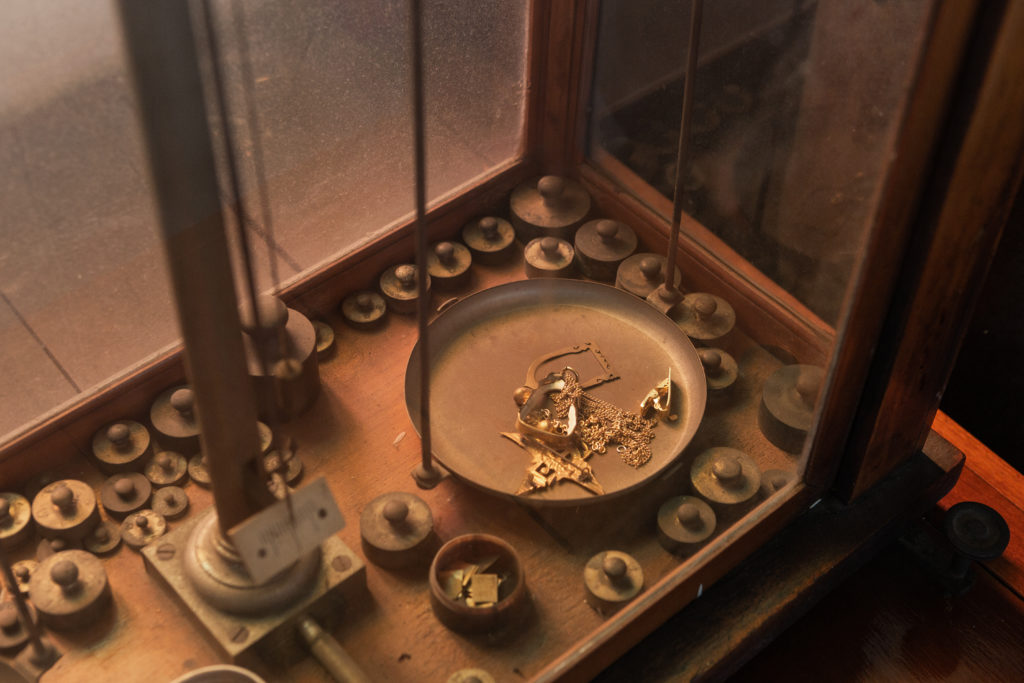
While for many Yaowarat is a foodie’s paradise, the area is also known as “Gold Street”, as it is the centre of gold trading with more than 100 shops scattered around the area. One of the oldest gold shops still operating today is Tang Toh Kang, which has been in business for 140 years, dating back to the era of King Rama V. The founder of the shop, Mr. Toh Kang, was a renowned gold wholesaler to many other shops in Chinatown and surrounding areas. If investing in gold is not something you’re interested in, the building itself is a sight to behold. The unique seven-storey building was designed by a Dutch architect and is a great example of the east-meets-west aesthetic that gained notoriety during the reign of King Rama V. Having been passed on from father to son, the shop is now run by its fifth generation, who created the museum to house all the relics and tools that have important historical value in the history of gold trading in Thailand. Visitors will find the museum on the sixth floor of the shop’s building. Here, you will see all the tools used in the process of gold making, including metal molds in different shapes and sizes, homemade tools for gold manipulation and even shop signs from over the years.
Please contact the shop in advance for a visit Mon - Sat 9:30 am - 4 pm, closed on Sunday 345 Mongkhon Rd, Soi Vanish 1, Samphanthawong, Bangkok Tel. +662-622-8640
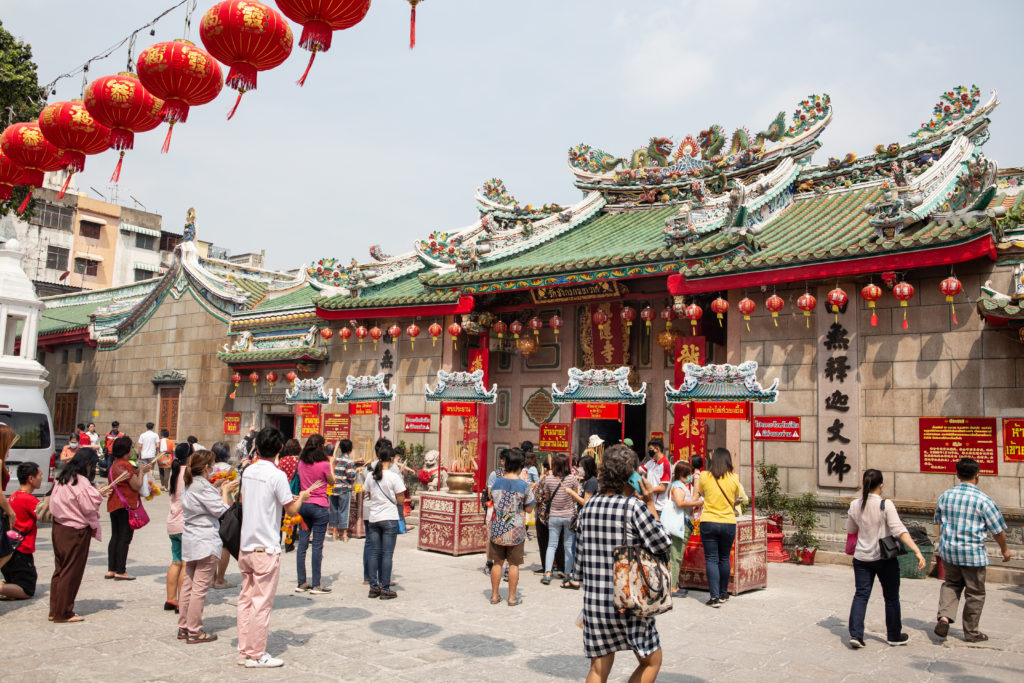
If there is one temple you must visit to learn about the history of the Thai-Chinese community, Wat Mangkon Kamalawat is it. This temple is famous not only amongst the Thai-Chinese community, but among Thais and visitors in general due to its unique architecture and rituals. Built in the 1870s, during the reign of King Rama V, the structure took eight years to complete. This temple is unique for its Teochew-Chinese style architecture, which uses wood, brick and intricate Chinese motifs to tell the building’s unique story. The Chinese name of this temple, “Leng Nai Yee”, can directly be translated to Dragon (Leng), Lotus (Nei), Temple (Yee), while Wat Mangkon in Thai is directly translated to “Dragon Temple”. Upon walking through the integrated gate, visitors will find themselves in a court, which is another characteristic of Teochew-Chinese style architecture, before they arrive at the main temple. Wat Mangkon is a popular place of worship, especially around Chinese New Year, as it houses 58 of the most important gods and mythological figures according to Chinese belief. Among those deities is the god of fortune, known to the Chinese as “Tai Sui”. Every year, according to Chinese astrology, certain Chinese zodiac signs are said to clash with Tai Sui, which results in “an unfortunate year”. Those who clash with Tai Sui that year usually come to Wat Mangkon to ask Tai Sui for good fortune and help to reverse their impending bad luck. Visitors can check directly at the temple if their Chinese zodiac is a clash and take the opportunity to avoid misfortune the local way.
Daily 5 am - 5 pm 423 Charoen Krung Rd, Pom Prap, Pom Prap Sattru Phai, Bangkok Tel. +662-222-3975
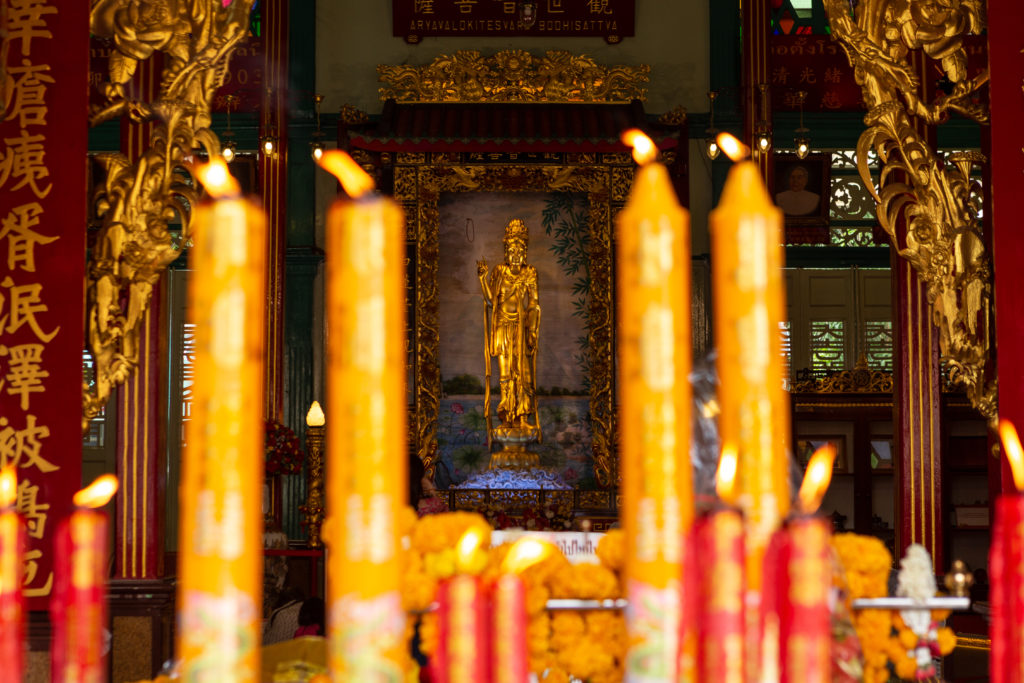
Many Thai-Chinese pay daily respect to Guanyin, the goddess of compassion, praying for good health. One of the most famous Guanyin shrines in Bangkok is located right in the heart of Chinatown at Thian Fa Foundation. The foundation, along with the hospital of the same name, was founded in 2002 by five Chinese communities in order to provide the poor and unfortunate with proper health care and other support. The figure of Guanyin statue at this shrine is carved from wood and believed to have been created 800 to 900 years ago. Visitors can experience local rituals by joining the worshippers and asking for blessings from Guanyin or by donating to the foundation to make a difference in the lives of the poor. Thian Fa Hospital, under the foundation, offers affordable healthcare to households with lower income and they also run frequent charity events around Bangkok. The foundation is known for being highly transparent and reliable, so you can be sure that your donation is in good hands.
Daily 5 am - 5 pm 606 The King's Birthday Celebration Arch (China Town Gate),Yaowarat Rd, Bangkok Tel. +662-237-2191
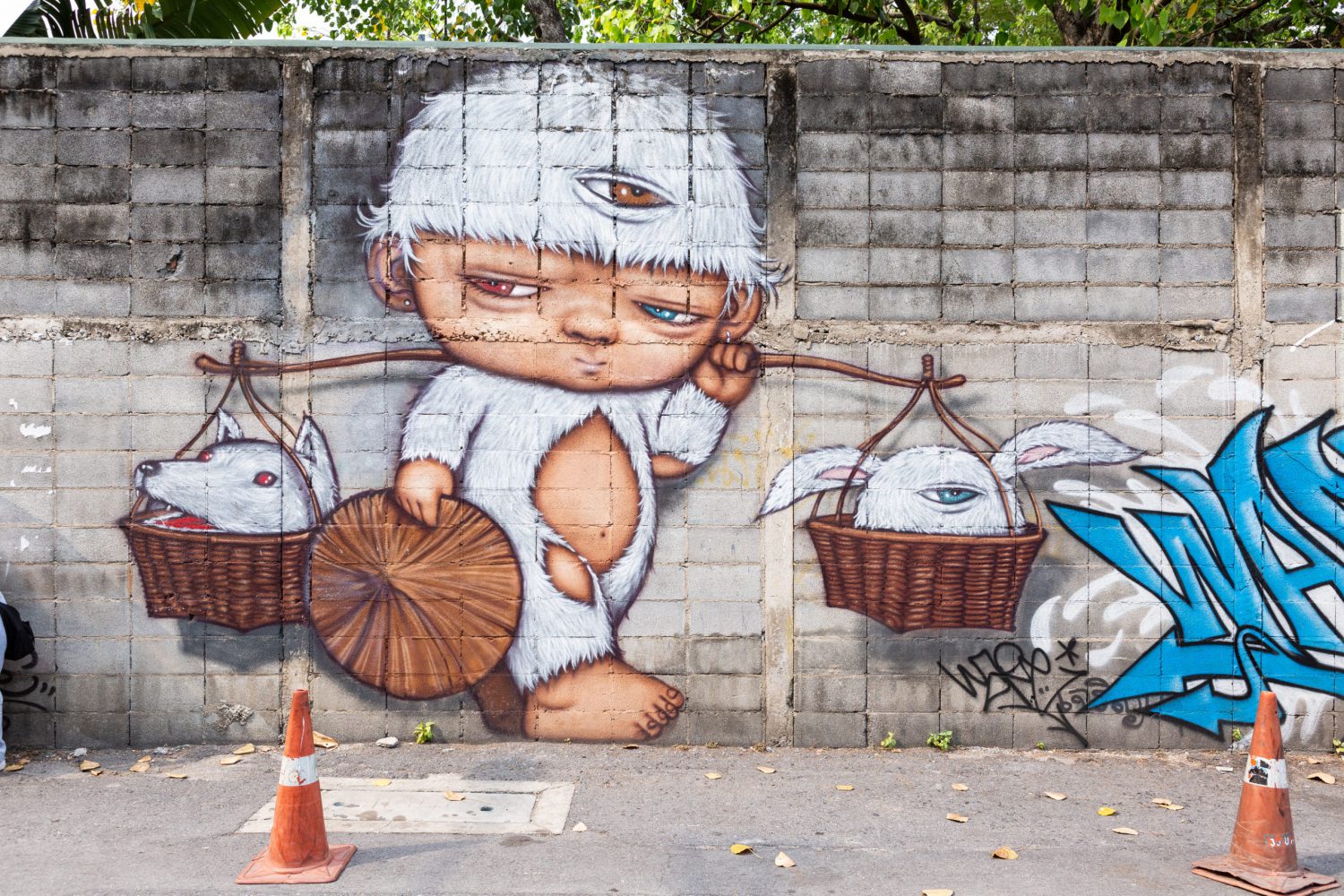
Bangkok’s Old Town offers plenty of activities for art lovers as well. Take a leisurely stroll down Charoenkrung Sois 28, 30 and 32, and you will find hidden murals and street art pieces created by some of the world’s best street artists and up-and-coming local talents. You will find pieces such as Alex Face’s signature three-eyed human bunnies and faceless portraits by Kult. Once you start to wander off the beaten path, it is amazing to see the old-world culture of Charoenkrung merging with modern art seamlessly. While some may still misinterpret street art as vandalism, more and more artists have formed together as a collective to spread awareness about this medium and Bangkok is slowly warming up to the movement. As you explore Charoenkrung, be sure to stroll around the Talad Noi and its hidden alleys as well. As you take a peek into many shophouses that remain unchanged over the decades, don’t forget to gently ask if you can take photos. If you’re interested in fashion, check out Rong Kuak alley where you can still see traditional ways of shoe-making. Don’t forget to end your exploration with local street food for the full Old Town experience.
There’s more than meets the eye when it comes to places to explore and things to do and see in Bangkok’s Old Town. From famous temples to hidden gems, there’s so much that perfectly represents Bangkok as a vibrant and creative city that’s full of energy. Take the time to explore the immediate area near ASAI Bangkok Chinatown for the perfect way to immerse yourself in Thailand. Trust us, you won’t regret it.
